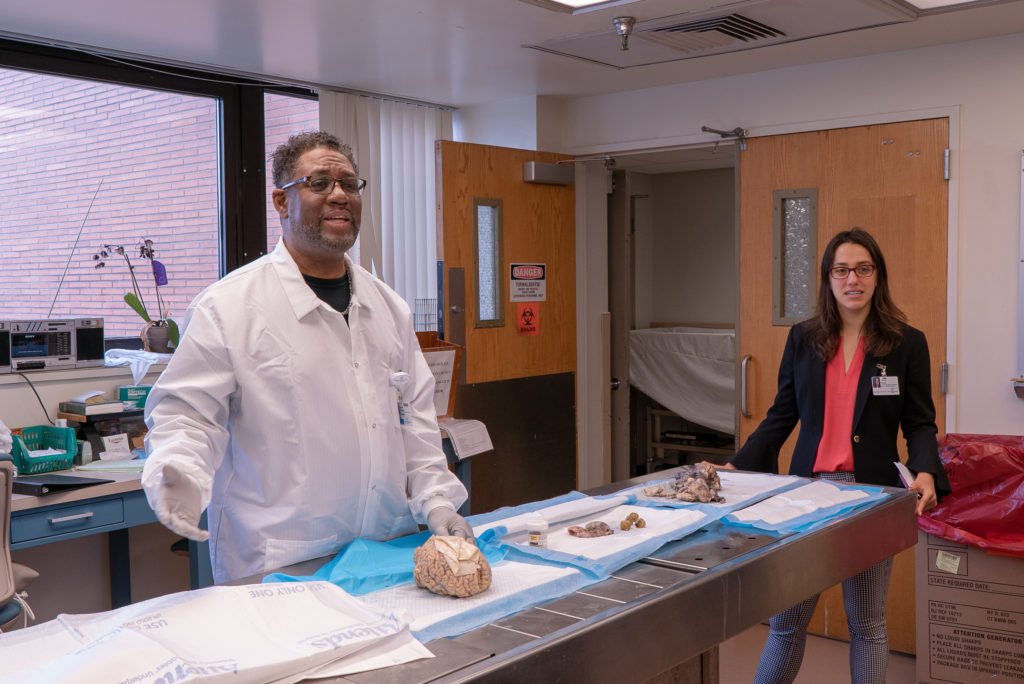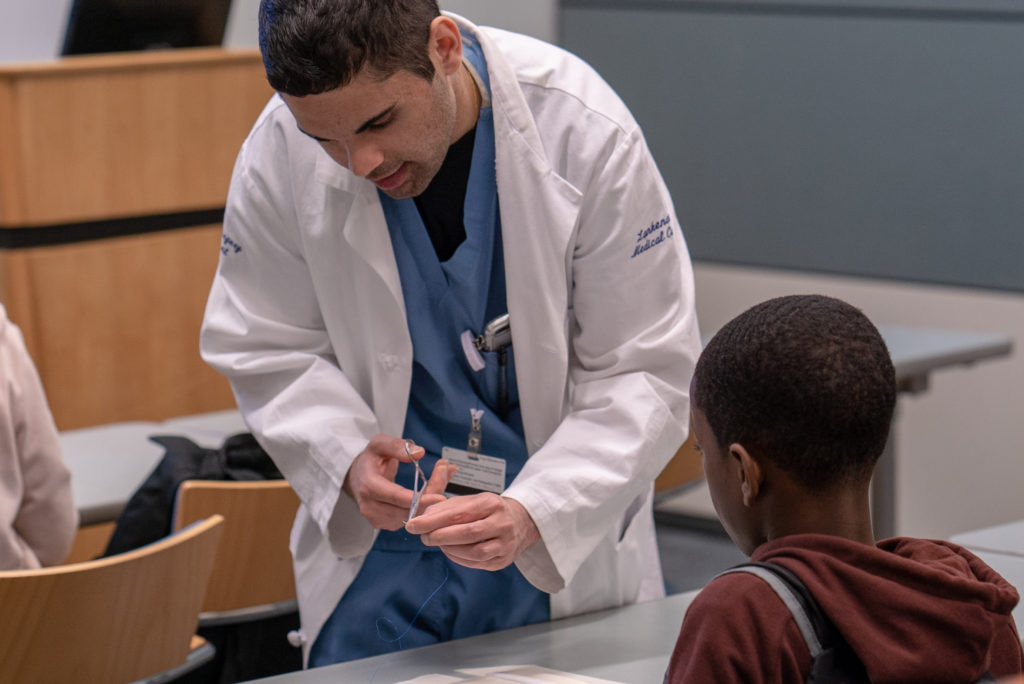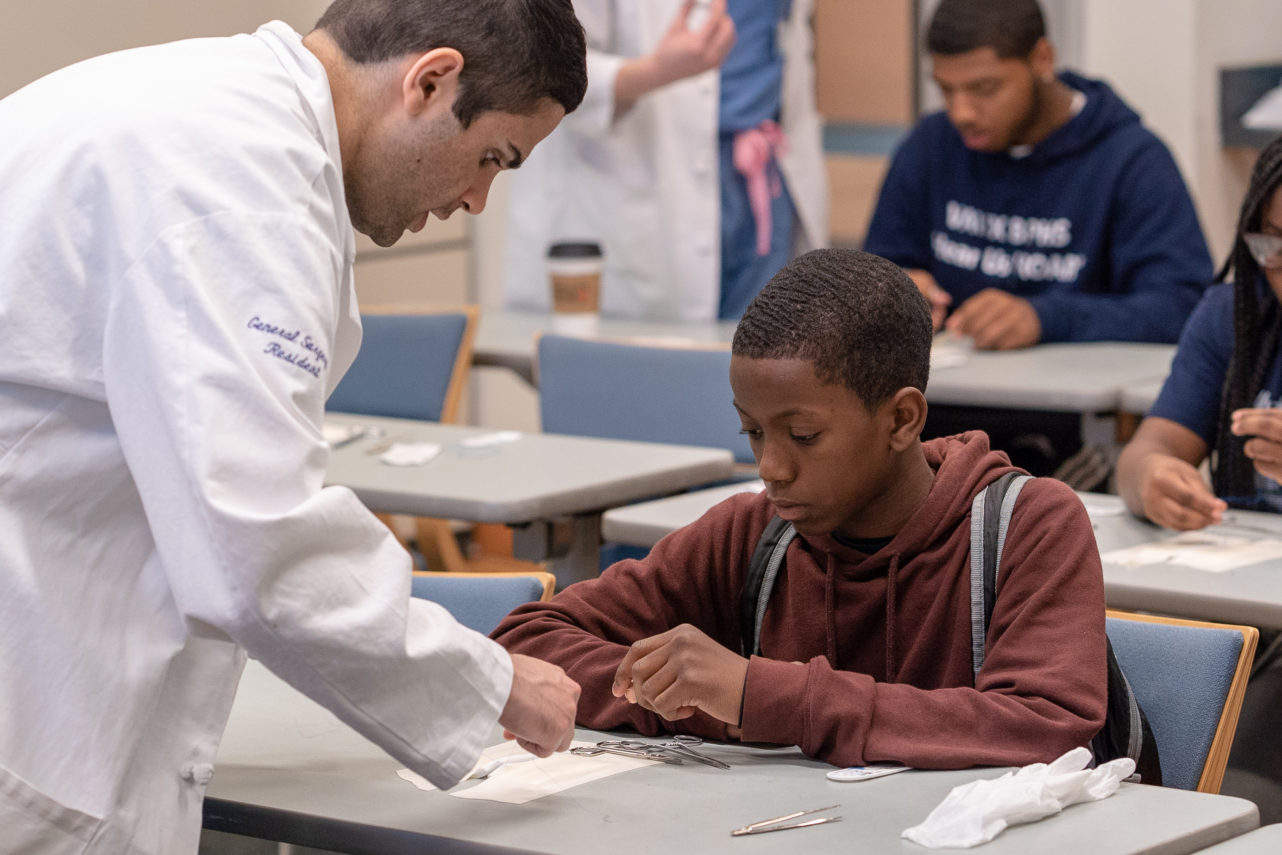If you were to think back to an average Wednesday afternoon during your high school years, what would come to mind? Perhaps sitting at your desk, taking notes, and maybe some days, counting the minutes to that final bell.
Vaux Big Picture High School (Vaux) does school differently. On Wednesdays, students leave the building for the afternoon with their advisory groups to explore potential internship sites and generally experience what Philadelphia has to offer beyond their neighborhoods.
Vaux, located in the Sharswood neighborhood, in North Philadelphia, has developed strong partnerships with more than 50 organizations, including La Colombe, Dock Street Brewery, and the Temple University Schools of Nursing and Dentistry, so that students can cultivate “Real World Learning” (RWL) experiences.

During a recent RWL outing, they spent an afternoon at Temple Hospital’s “Cradle to Grave” program, where they learned about medical interventions commonly performed on gunshot wound patients. The group also visited La Colombe’s coffee roastery, toured the Mutter Museum, and engaged in community asset mapping around Jefferson Hospital. Students will have opportunities to secure internships with these partners down the road.
Formerly known as Roberts Vaux Junior High, the school shut down in 2013 amid a wave of school closures. It reopened in September 2017 as part of a major neighborhood revitalization effort led by the Philadelphia Housing Authority (PHA). The PHA bought the school building from the School District of Philadelphia (“the District”) in 2016 for $2 million as part of a $500 million plan that also includes commercial and public housing redevelopment in the neighborhood. It is the largest undertaking by the housing authority to date.
PHA partnered with the District to manage the school. The District chose the Philadelphia outpost of the national Big Picture Learning Network (Big Picture) to operate it, initiating a contract relationship new to the Philadelphia education landscape. Due to the nature of the contract between the the District and Big Picture, Big Picture manages the school from an operational standpoint, as well as a financial one. For Big Picture to remain in good standing per their contract, Vaux must meet established targets around enrollment, attendance, and graduation.
Big Picture serves youth in more than 50 schools nationwide and welcomed this opportunity as two years earlier they had submitted a proposal to open a new high school in North Philadelphia. Vaux opened with 126 ninth grade students and plans to grow by one grade each year. The inaugural ninth grade class will graduate in 2021. David Bromley, the executive director of Big Picture Philadelphia, addressed the intentions behind opening a new school with only ninth grade students. “Our big goal here is for students to take ownership of their learning and their lives.”
As a neighborhood school, Vaux primarily serves the students of the Sharswood community and allows students from other neighborhoods to fill any remaining spots on a first-come, first-served basis. All of the teachers, known as “advisors,” and administration are employees of the District. Students are grouped in advisories no larger than 18 people. They are led by an advisor who will move with the students throughout each year of high school.
The school’s reopening and the District’s decision to contract an external operator, demonstrate attempts to improve the school experience for the historically underserved students in the Sharswood neighborhood. The Big Picture learning model underscores the importance of developing close relationships with parents and community members, and creating ways for student learning to continue outside of school.
Vaux aims to operate similarly to a community school by not only educating students through the nationally-recognized Big Picture learning model, but also by providing resources, such as healthcare and adult education services for the Sharswood community. To do this, they have developed strong partnerships with organizations like Montgomery Early Learning Centers (MELC), the Community College of Philadelphia (CCP).
The Big Picture learning model is a project-based learning model, lending itself to the idea that student outcomes will improve if student voice is heavily incorporated into learning processes. Every student has an individualized learning plan (ILP), created collaboratively by students, advisors, and families. Additionally, very early in their ninth grade year, students are intentionally encouraged to begin thinking about life after high school, and increasingly so as the years progress.

Starting on Wednesday afternoons, during the second week of the school year, students were offsite with their advisory groups and advisors, learning not only about the world outside their classroom walls, but outside their neighborhoods as well. During RWL visits, students are expected to take notes, ask questions, and eventually incorporate their learnings into quarterly presentations to their classmates, advisors, and families — these presentations are known as “Exhibitions”.
Through RWL, students gain an idea of what it means to follow one’s interests and passions in the professional working world, in a wide variety of organizations and settings. When asked about her perspective on RWL experiences, one advisor noted, “I have to say it’s pretty awesome. As soon as they’re out of the school environment, some of them totally change. They’re engaging with the world in new ways.”
Before and after the RWL visits, students conduct research, ask questions, and discuss what it would take to be successful in the professions that they’re exploring.

Parents have also been supportive of these opportunities to engage students in early career exploration. “I appreciate the Wednesday trips. [My daughter] comes back with stuff written down about what she can do. The school really gets children involved, students want to go to school. Students typically have to wait until eleventh or twelfth grade to get these kinds of experiences. It’s nice to have a school that’s behind her,” one parent shared.
A major component of the learning model is internships, where students are expected to take significant steps toward demonstrating their readiness to learn. Beginning in tenth grade, off-site internships will drive learning. Like other Big Picture schools, students will build up to being offsite two days a week. The process for how students acquire internships is strategically scaffolded. As students engage in wide range of learning experiences across their city, they simultaneously build relationships with the wider community. Another advisor remarked, “Seeing our students experience their city in new ways has been amazing. Some of them hadn’t ever seen the world outside of their neighborhood.”
This article is part of our Philadelphia Innovation High School series, that was created in partnership with the Barra Foundation.

